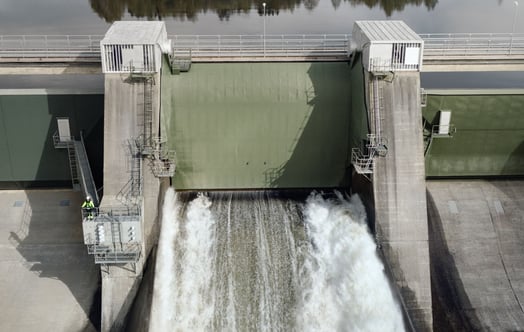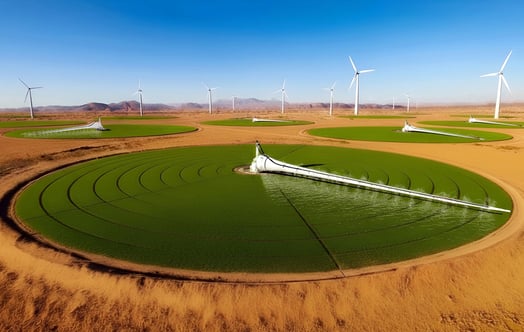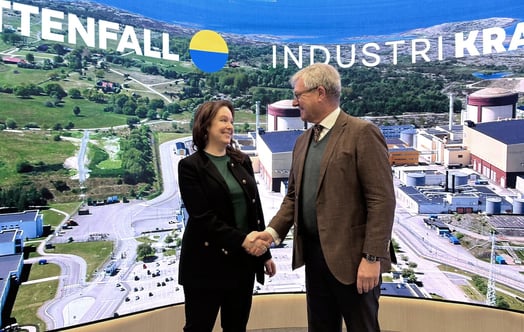Over the past 20 years, several major nuclear power projects have been affected by delays and increased costs. This is one of the reasons for the interest in modular reactors.
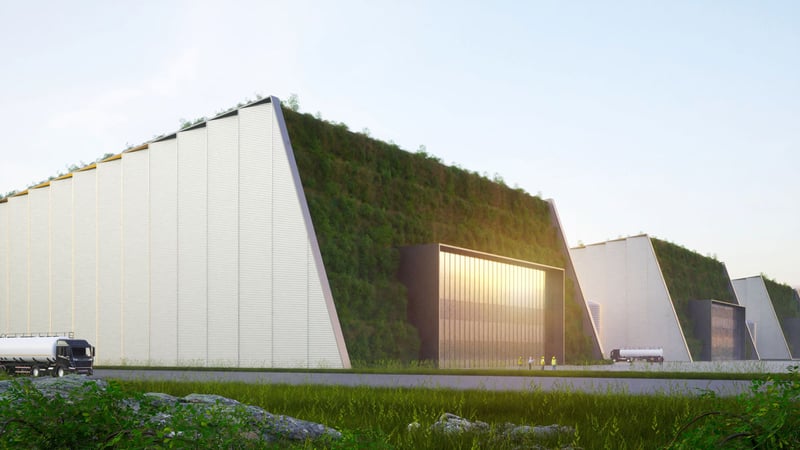
Modular nuclear reactors. Concept illustration.
The world and the climate require more fossil-free energy, much more. In addition to the strong growth in wind and solar power, there are also plans, in an increasing number of countries to build new nuclear power to meet demand, both traditional large scale reactors and so called SMRs.
SMR is a collective term and that comes in many shapes, sizes and technologies. But most of the projects planned for today, including by Vattenfall in Sweden, are based on existing and proven reactor technology, used in today’s reactors, firmly developed and refined with today's methods and innovations. And they are in fact not small but instead often as big as the first conventional reactors in Sweden.
What is new in the SMR concept, is that these reactors, unlike traditional ones, are intended to be rolled out modularly, in series. Moreover, the reactor modules will largely be able to be prefabricated and assembled on site, which in turn makes logistics and project implementation easier.
Large reactor projects ran into problems
It was sometime around 2010 that the idea of modular reactors began to take off. At that time, it was evident that several ongoing projects to build large nuclear power reactors, in countries such as Finland, France and the United States, had ran into problems.
"You could say that the concept of SMR is the nuclear industry's answer to these new-build projects with large traditional nuclear reactors in Europe and the US, that took place in the early 2000s and which failed in terms of construction times and costs," says Marcus Eriksson, senior advisor at Vattenfall and project manager for plant design in Vattenfall's ongoing new-build projects
A common thread and an important lesson from these projects are that construction started before the design was fully completed.
“Combined with a large workforce on site and a complex project coordination, this led to costly delays when important design changes had to be made late in the project implementation," says Marcus Eriksson and continues:
"With modular reactors, changes and adaptations have less impact because you commission one unit at a time, and take the lessons learned with you to the units that come after. These can therefore be built in quick succession, typically every few years.”
The major benefit of modular reactors is therefore lower project risks and higher predictability, which results in lower financing costs and thus relatively lower costs for the electricity produced. Another financial advantage is that a shorter construction time means that revenues will come in faster. This helps to strengthen the business case and the profitability of the investment.
SMR not always the best choice
Marcus Eriksson emphasizes, however, that this does not mean that SMR is always the best choice for new nuclear. It depends on what you want to achieve, what the conditions of the electricity market and the financing model look like and, not least, the conditions for new construction on the site.
In the case of the project in Ringhals at the Swedish west coast, Vattenfall thoroughly investigated whether to build modular reactors or traditional, large-scale reactors (LSR) adjacent to the existing nuclear power plant. When the choice finally fell on modular reactors, a major reason was the smaller physical size. The reason is that Ringhals is located on a peninsula, so space is limited, and new full-size reactors would mean a too big logistical challenge during the construction phase – there is simply not enough space for everything that is required to build large scale reactors. As an example, LSR would demand up to three times as large workforce during the construction.
Canada in the lead
Today, there are many SMR projects underway in the world – in Europe in the Czech Republic, the United Kingdom, Poland, Estonia and Sweden, among others. At the forefront globally, however, is the Canadian energy company Ontario Power Generation, OPG. Here, the first of four reactors are planned to be in operation 2029.
"Vattenfall is in contact with several of the ongoing projects and has also visited OPG in Canada. Once we also have decided which supplier to use, we will be able to work even more closely with the projects that have made the same choice. That makes us even better prepared.”
In its ongoing process, Vattenfall has decided to proceed with American company GE Vernova and British company Rolls-Royce SMR.
"Basically, their solutions are based on the same technology that we already use and have extensive experience of. It is the same light water technology and the same type of fuel as in our five existing Swedish reactors, which is a great advantage," says Marcus Eriksson.
As a first step, Vattenfall plans to build three to five modular reactors, depending on the supplier chosen. The total output is estimated at about 1500 MW. The first reactor in the series is expected to be in operation in the mid-2030s at the earliest.
Read more: Vattenfall selects suppliers on the journey towards new nuclear power
SMR technologies
Light water
There is a wide range of solutions under development today. Light water reactors use plain water as a moderator and cooling medium and is the most used technology. The reactors that Vattenfall and countries such as the Czech Republic, the UK, Bulgaria, Poland, Estonia and Canada are planning are of this type.
District heating
In Finland and Poland, for example, there are projects to use SMRs for district heating production only. Such a power plant operates at low pressure and temperature, has a simple design, high thermal efficiency and takes up less space because components for electricity generation such as high-pressure turbines, generators and transformers are not used.
Advanced SMRs (Generation IV)
In so-called advanced SMRs, refrigerants such as gas, liquid metal or molten salt and new types of fuels are used. Some are also designed to recycle spent nuclear fuel. The technologies are often referred to as Generation IV and could be commercially interesting for electricity and heat production for special industrial applications as well as for localization in places that are not connected to the power grid. These technologies have made progress and some projects are on their way to the prototype stage.
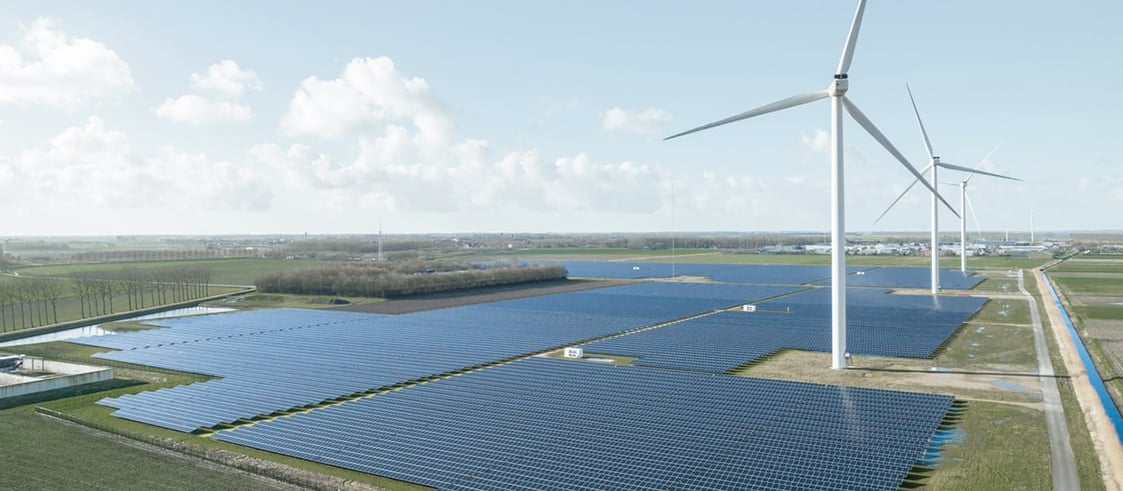
Register for our monthly newsletter THE EDIT
THE EDIT is Vattenfall's new monthly newsletter. Each issue highlights a new burning issue from the world of sustainable energy and fossil freedom.

